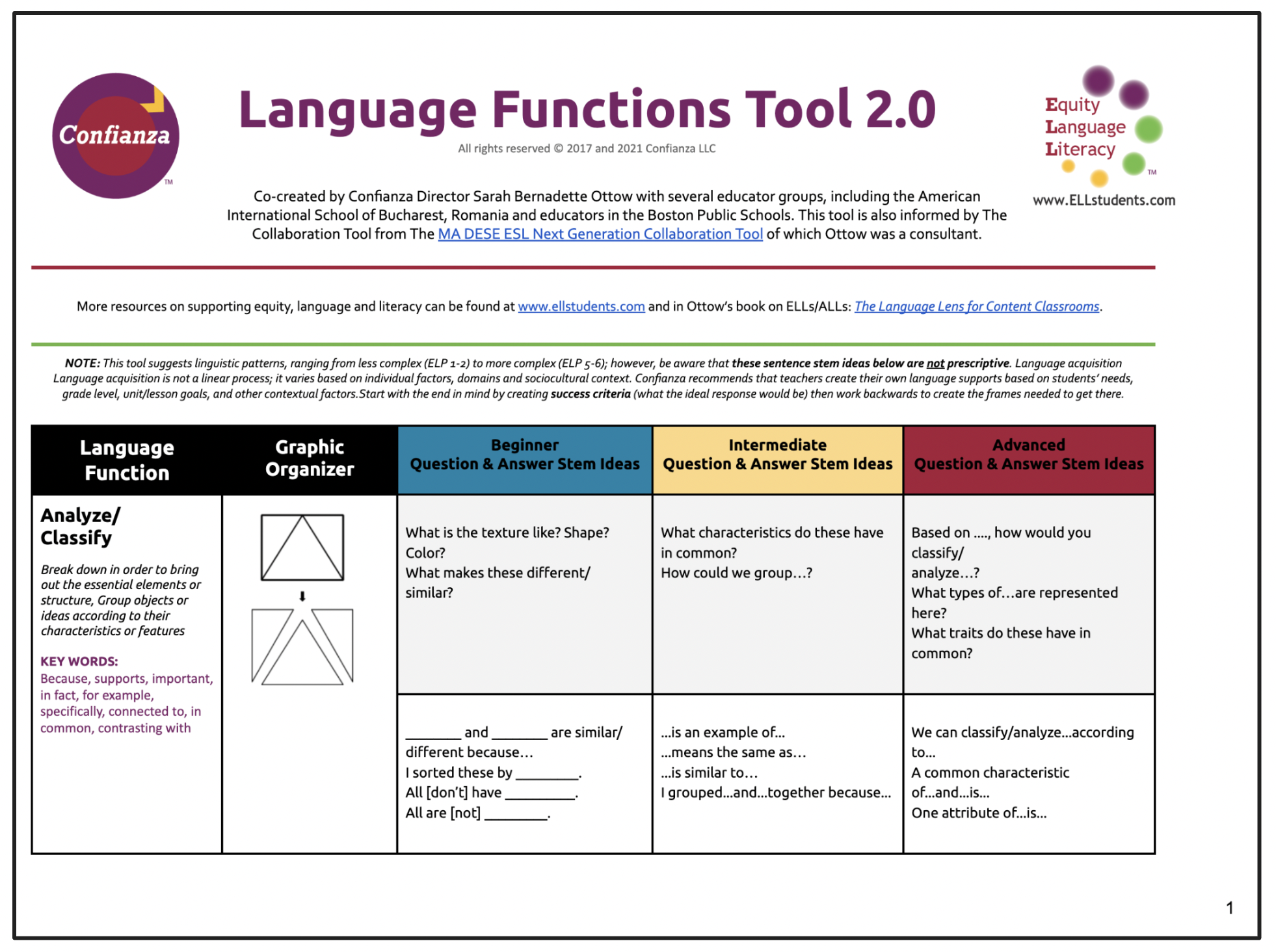We are Academic Language Learners (ALLs)
by Marisa Nathan, updated by Sarah B. Ottow, 2021
Have you ever you thought about the language that is necessary to access content in any K-12 classroom? In working closely with high school English Language Development programs, something has become very evident to me. I have noticed that high school teachers are very good at teaching their content. However, the language of the content is often forgotten about. In order for ALL students to have access to content, the language of core academic areas must be addressed. Classroom teachers need to start seeing themselves not only as experts of their content but also experts of the language that is used to access the curriculum.
While our English learners do benefit from specific attention to their needs, ALL students can benefit from strategies that we use with English learners. Many students come to school with many different experiences and backgrounds. Students who come from low socio-economic backgrounds benefit from many of the same supports that may be put in place for English learners.
As an illustration of this, I was leading some professional learning for a math department recently. During this session we learned about academic language and how it is the bridge to content. A math teacher raised his hand and said, “Now I know why my students only use pictures when trying to justify their answers in Algebra, they simply do not have the language to justify their answers.” This was exciting because I saw a light bulb come on for this content teacher and I shared the resource below from Confianza (Confianza’s Language Functions Tool; featured below is an excerpt from page 1). I have visited his classroom since and I have seen examples of him supporting language by addressing the language function, language structure, and task associated with the function through the use of a word wall.
This academic language function chart is a great tool because it addresses the Language Structures/Key Signal Words and Tasks Associated with Academic Language Functions. If you take a look at the resources you can see that there are structures/key signal words and tasks that we need to know in order to justify along with other language functions. The chart lays it out in a very user friendly way. It is common that this knowledge of language is taken for granted and teachers think that students should just know how to produce and understand this language.
Language Development Standards
All academic content areas have a specific language that is essential for students to know, understand, and use. This is what is referred to as academic language. Simply put, language standards are different from content standards because they address the language that is necessary to access the content. Different language is needed to succeed in each content area while some language is used across the whole school day. Language cannot be separated from culture and the sociocultural context in which that language is used. For more on this, see The Language Lens for Content Classrooms: A Guide for K-12 Teachers of Language Learners.
The Importance of Language Objectives in ALL classrooms
Having a language objective posted for every lesson can be helpful when addressing academic language through content. Having this precedence makes the point that language is valued in the classroom and that it is being taught. I see many examples of content objectives posted in classrooms so why shouldn’t ALL teachers also post a language objective? This way students are aware of the language that they will need to access the content?
I challenge you to start thinking about academic language as the bridge that makes accessing content possible. Not all students come to school with the same experiences, backgrounds, and understanding of the world. As educators it is our mission to ensure that ALL students learn and that we close the achievement gap. If we start seeing ourselves and our students as academic language learners ALLs, we may just be on the right path to do this difficult job.
Check out this classroom tour of visible academic language instruction from Confianza's collaboration with the ENLACE Academy and Teaching Channel.
WIDA is a trademark of the Board of Regents of the University of Wisconsin System. Any content that references “WIDA” or the WIDA ELD Standards in Confianza’s work is licensed through the University of Wisconsin System. For more information on using the WIDA ELD Standards please visit the WIDA website.


